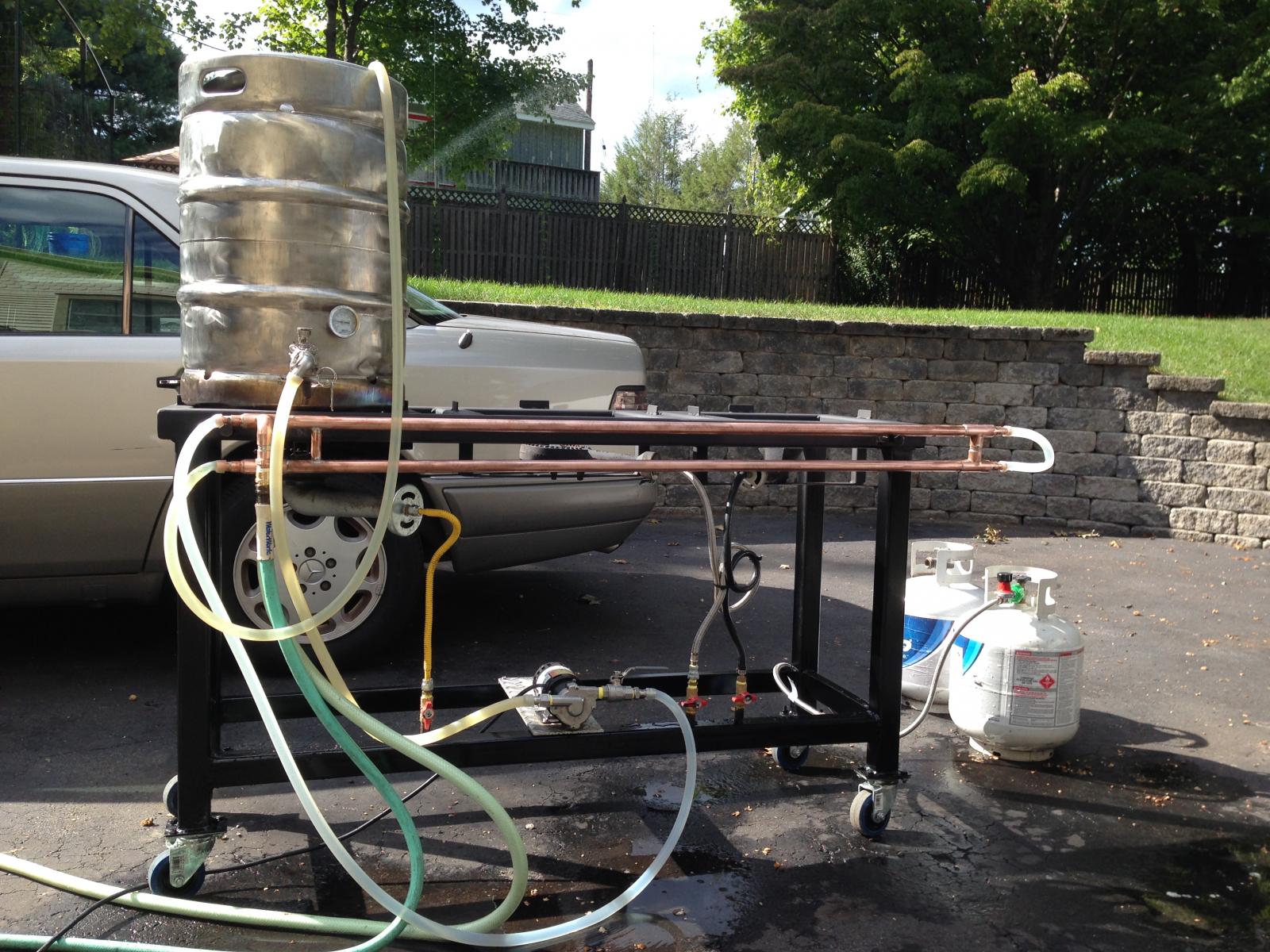Owly055
Well-Known Member
- Joined
- Feb 28, 2014
- Messages
- 3,008
- Reaction score
- 687
I use a home made immersion chiller, but would like to have an internal chiller of some type. What holds me back from this is the fact that there really is no way to be sure they are clean inside. A plate chiller bothers me more than any other, in that I have cut open oil coolers of similar design, and always found an abundance of sediment in areas where there is no direct flow. Plate chillers have lots of dead spaces to accumulate settlings where no amount of flushing is going to get it out. If they were not so expensive, cutting one open after a year or two of use would be interesting.
The other day I watched my friend who owns a microbrewery clean his plate chiller with a hose. Take a few wing nuts loose, and spread the plates, and hose it out. The water passages didn't spread open, but the wort passages did. It had a LOT of trub in it, but he hadn't flushed it with water first.
Every brew, he opens and cleans the chiller! Needless to say, it's quite large and very expensive.
A counterflow chiller has no dead spaces, and in theory at least could be swabbed internally using something a suitable swab pushed through by water or compressed air. It also could be flushed using a combination of water and compressed air like flushing a radiator..... with some assurance of getting it all.
For this reason, and because I can build it myself, I will go to a counterflow when I do finally go to an internal chiller. I want an internal chiller for two reasons. One is so I can use a Hopback, and the other is sanitation. Hot wort goes in one end, cold wort comes out the other, and if the water is not turned on until the wort comes out the far end, it should be sanitized by the hot wort, and it can flow directly into the fermenter. A win win situation. As it is, I have a full kettle of wort with the chiller sitting in it, and the top wide open. For around half of the 8 minutes it takes to chill my wort, it's vulnerable to microbes from the environment..... being cool enough for them to survive.
H.W.
The other day I watched my friend who owns a microbrewery clean his plate chiller with a hose. Take a few wing nuts loose, and spread the plates, and hose it out. The water passages didn't spread open, but the wort passages did. It had a LOT of trub in it, but he hadn't flushed it with water first.
Every brew, he opens and cleans the chiller! Needless to say, it's quite large and very expensive.
A counterflow chiller has no dead spaces, and in theory at least could be swabbed internally using something a suitable swab pushed through by water or compressed air. It also could be flushed using a combination of water and compressed air like flushing a radiator..... with some assurance of getting it all.
For this reason, and because I can build it myself, I will go to a counterflow when I do finally go to an internal chiller. I want an internal chiller for two reasons. One is so I can use a Hopback, and the other is sanitation. Hot wort goes in one end, cold wort comes out the other, and if the water is not turned on until the wort comes out the far end, it should be sanitized by the hot wort, and it can flow directly into the fermenter. A win win situation. As it is, I have a full kettle of wort with the chiller sitting in it, and the top wide open. For around half of the 8 minutes it takes to chill my wort, it's vulnerable to microbes from the environment..... being cool enough for them to survive.
H.W.

















![Craft A Brew - Safale S-04 Dry Yeast - Fermentis - English Ale Dry Yeast - For English and American Ales and Hard Apple Ciders - Ingredients for Home Brewing - Beer Making Supplies - [1 Pack]](https://m.media-amazon.com/images/I/41fVGNh6JfL._SL500_.jpg)








































